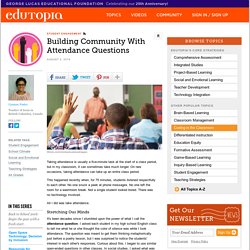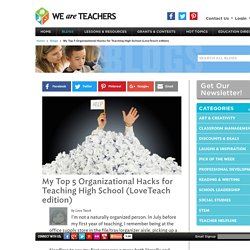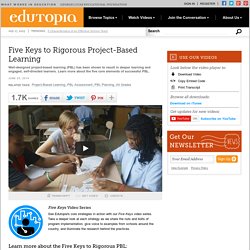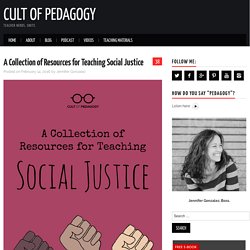

Untitled.
Co-teaching. Classroom management. TED Talks about teaching/learning. Building Community With Attendance Questions. Taking attendance is usually a five-minute task at the start of a class period, but in my classroom, it can sometimes take much longer.

On rare occasions, taking attendance can take up an entire class period. This happened recently when, for 75 minutes, students listened respectfully to each other. No one snuck a peek at phone messages. No one left the room for a washroom break. Not a single student looked bored. All I did was take attendance. Stretching Our Minds It's been decades since I stumbled upon the power of what I call the attendance question. The most important characteristic of my attendance questions is that there are no "right" answers. When we trace back the meaning of attend through Old French (atendre) to its Latin root (attendere), we can see that when we attend, we are "stretching our mind toward" something. When we take attendance, we are essentially asking each student, "Are you here?
" Creating a Sense of "We" Questions at the beginning of the semester may be: My Top 5 Organizational Hacks for Teaching High School. I'm not a naturally organized person.

In July before my first year of teaching, I remember being at the office supply store in the file/tray/organizer aisle, picking up a single black tray and thinking, "Hmm ... this should do it. " Needless to say my first year was a mess both literally and figuratively. Like a lot of things in teaching, I learned how to be organized by trial and error. Lots and lots and lots of error. To save you some error, here are my top five organizational tricks! 1) The BGT The BGT in my class stands for Big Gray Thing because I don’t know what else to call this beautiful specimen.
I teach three double-blocked class periods, so I have one “column” in the BGT for each class, with different tray labels for vocabulary, grammar, school forms/slips, absent/late work, tests, and then Assignments A through C for work that doesn’t fall under the other categories. I honestly don’t know how I survived without the BGT. Just keeping it real, y’all. Five Keys to Rigorous Project-Based Learning. Voiceover: How will today’s children function in a dangerous world?

What means will they use to carve the future? Will they be equipped to find the answers to tomorrow’s problems? Teacher: When you think about traditional learning you think of a student sitting in a classroom and being talked at. Teacher: Now I imagine a lot of you are still thinking... Teacher: They are supposed to be a sponge.
Peggy Ertmer: So there are a lot of different ways to approach PBL, a lot of different ways to implement it, but really it all boils down to five essential keys: real-world connection, core to learning, structured collaboration, student driven, and multifaceted assessment. Student: One of the problems in the ocean is that with the higher amount of CO2 calcifying organisms are decreasing and we’re testing to see how well life in the ocean lives without calcifying organisms. Student: --four by eight feet. Peggy Ertmer: So the second commonality is the PBL unit provides academic rigor. Student: Yes.
A Collection of Resources for Teaching Social Justice. Ask teachers to describe the impact they hope to have on their students, and most will eventually say something along these lines: I want my students to grow into responsible citizens.

I want my students to participate in society in an active, productive way. And maybe: I want my students to change the world. But how many of us know how to make that happen, really? Can we explicitly teach students how to change the world? If this question has been whispering in the back of your mind, the resources in this collection will help. The National Association of Social Workers defines social justice as “the view that everyone deserves equal economic, political and social rights and opportunities.” If you teach social studies, you’ll have no trouble finding direct curricular links to social justice. In other content areas, teachers disagree over whether social justice has a place.
As an undergraduate, I served as a student counselor for three years and a resident assistant (RA) for one. Teaching Tolerance - Diversity, Equity and Justice.